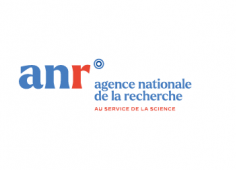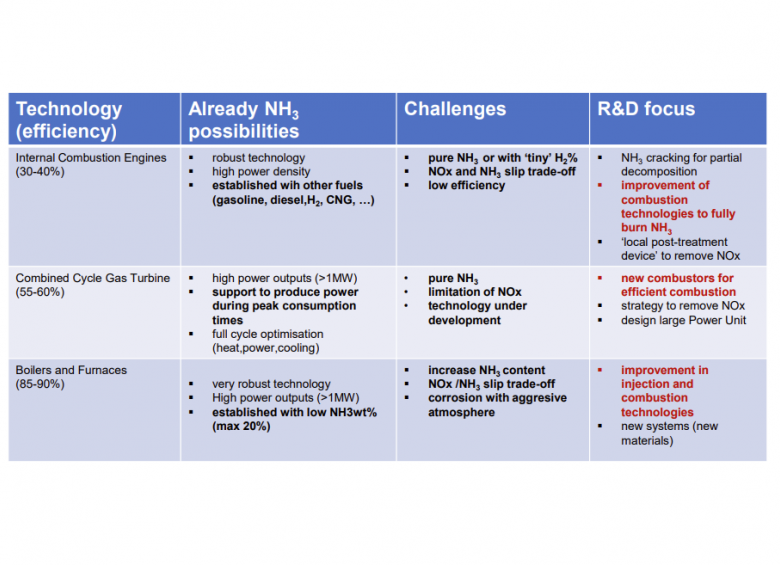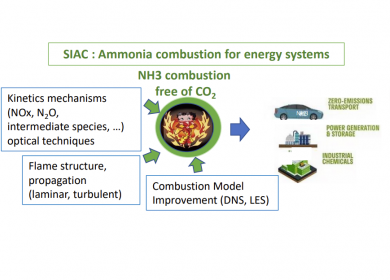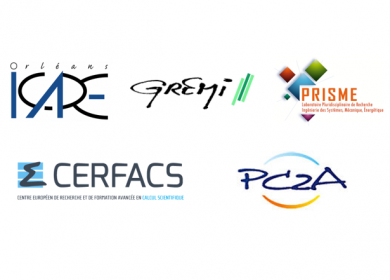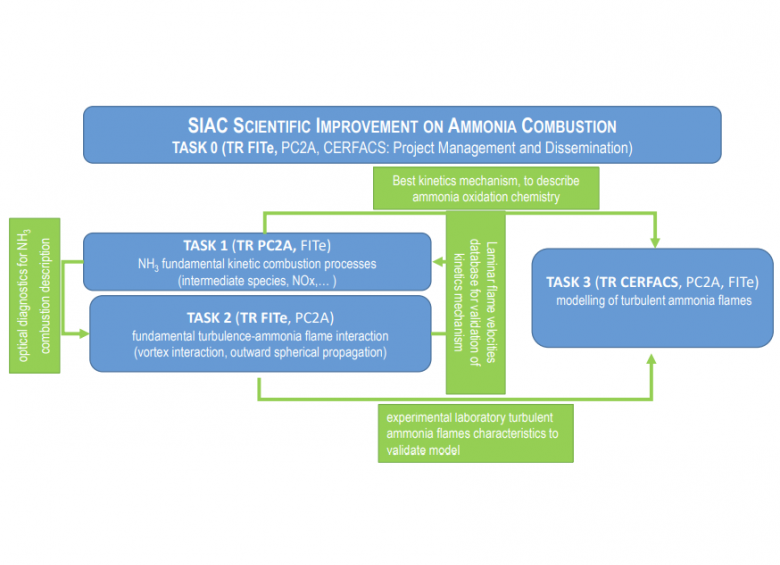Scientific Improvement on Ammonia Combustion
| Project supported by Agence Nationale de la Recherche | |
| Duration ► | 48 months |
| Start ► | November 2022 |
| ANR funding ► | 630 k€ |
Context
To reach the Carbon neutrality target in 2050 as announced Europe in its Green Deal, the electricity demand will be strongly increased for energy, transport and heating/cooling systems. For that, most countries consider clean and intermittent renewable energy resources (as wind and solar) as the main energy resources for the future. However, due to their intermittency and the need to keep a secure electricity supply, the energy storage will be an integral part of the modern electricity smart grid. One solution to store the renewable energy excess is what is commonly named ‘electro-fuels’, only feasible if users develop adapted technical solutions to use them in energy converters and/or in transport systems. Hydrogen is often considered as the best candidate but suffers up to now from some drawbacks such as its storage capacity and safety.
Another alternative is Ammonia (NH3), which can be considered as a ‘mere’ hydrogen (H2) carrier (as recognized by IEA), complementary to the delivery of the “Hydrogen Economy”. Ammonia has some advantages over hydrogen such as its higher volumetric energy density; its easier and more widespread production, handling and distribution capacity, and better commercial viability; its liquid phase by compression to 0.9 MPa at atmospheric temperature; an already existing well-established and reliable infrastructure for both ammonia storage and distribution (including pipeline, rail, road, ship).
Nowadays, NH3 is mainly considered as a co-fuel of carbonaceous fuels in order to reduce the overall carbon footprint of applications (such as gas turbines, industrial furnaces or internal combustion engines). To go a step further and fully decarbonize emissions, the combustion of pure NH3 or co-fueled with the smallest quantity of H2 as possible has to be considered. So far, most applications rely on preliminary partial thermal cracking of NH3 to N2 and H2 to counteract the high ignition temperature of NH3 and its low flammability (a positive safety characteristic).
The lack of knowledge regarding the oxidation chemistry of NH3 and the combustion process itself currently limits the optimization of NH3 combustion. The problems identified are mainly linked to flame stabilization and ignition, flame optimization to increase global efficiency and reduce pollutant emissions (NOx and N2O as the second important Green House Gases (GHG) after CO2 and unburnt NH3).
Objectives
The objectives of SIAC can be summarised as follows :
- To improve the knowledge on ammonia combustion from kinetics description to flame response to turbulence by providing new database obtained experimentally in lab-scale set-ups with high resolved optical techniques and numerically by high-fidelity DNS.
- To understand ammonia/air turbulent flame structure
- To resolve some (but not all) essential fundamentals milestones, experimental and modelling.
- To provide accurate numerical simulation tools to design energy system based on NH3 combustion.
Partners
FITe (Fédération pour l'Innovation et la Transition énergétique) is a CNRS research federation with University of Orléans. It relies on the expertise of the three constituent laboratories (GREMI, ICARE & PRISME) to propose new ideas responding to the major societal challenges of reducing polluting emissions, new carbon-neutral processes and reduction of the environmental impact during energy production, while ensuring safe operation. FITE-PRISME is one of the international leaders in understanding of ammonia combustion, mainly for engines relevant conditions (but not only) and FITe-ICARE, a pioneer on the studies of ammonia flame dynamics by external excitation.
PC2A is a joint CNRS-Université de Lille research laboratory. The combustion group of PC2A is interested in combustion chemistry understanding by using a double approach combining experiments and kinetics modelling. One specificity of this team concerns its expertise in spectroscopic methods for detecting and quantifying labile trace species. PC2A is one of the international leaders in prompt-NO formation chemistry with more than 25 international peer papers, has been involved in several ANR projects related to combustion chemistry.
CERFACS is a research organization, supported by 7 shareholders (AIRBUS, CNES, EDF, Météo-France, ONERA, SAFRAN, TOTAL Energies) that aims to develop advanced methods for the numerical simulation of large scientific and technological problems of interest for research as well as industry. The main field of application of the CFD team is DNS and LES of unsteady compressible multiphase reacting turbulent flows in complex geometries, based on High Performance Computing. CERFACS has taken part in more than 30 French National projects and 15 European projects. CERFACS possesses its own computational machines and is used to be selected to compute on PRACE machines. The in-house CFD code AVBP (DNS/LES with reduced chemistry) together with the in-house chemical reduction code ARCANE will be used in this project.
Work Plan
The key factor for the success of SIAC is to combine the respective skills of the partners in the multidisciplinary fields (fundamental kinetics, optical diagnostics, fluid mechanics, numerical modelling) in order to participate to the resolution of some fundamental issues for energy production of zero-carbon emission combustion of pure ammonia combustion.
The overall methodology is to conduct joint experimental and numerical studies for fundamental configurations. The research work will be structured on one management Task (T0) and three technical Tasks (T1 to T3), coordinated by a Task Referee (TR).
Expected Results
SIAC will contribute to one of the main objectives set for the DOMAIN 2 of the 2022 ANR call entitled Sciences for Energy and Materials. This FIRST project on ammonia combustion in France proposes to lead fundamental experimental and numerical investigations, based on advanced Laser diagnostics and laboratory scale experiments and high-fidelity numerical simulations.
The improved detailed kinetic mechanism of the NH3 oxidation (possibly with H2 addition) and the NO formation (Task 1), and the development of adequate spectroscopic measurement technique for ammonia combustion will enhance the analysis of turbulent-flame interaction (Task 2).
The turbulent-flame interaction will be experimentally studied as a function of initial thermodynamics conditions encountered in real applications (Task 2) and a turbulent combustion model able to describe all combustion regimes in a continuous framework will be proposed and validated against measurements performed within the project in Task 3.
Broad dissemination of scientific results obtained during the Project will be made not only through the publications in the most prestigious scientific journals in the field but also in oriented open-access journals. The research will be also disseminated through international conferences.The numerical and experimental reference data provided in this project will be made available to the scientific community through the workshops on Ammonia.To increase the scientific impact, the extended database generated in SIAC should be available to a worldwide research community through the different scientific networks, to contribute to ameliorate as example, detailed kinetic mechanism or turbulent-combustion model.
Contact : Christine ROUSSELLE ⇒ christine.rousselle@univ-orleans.fr

